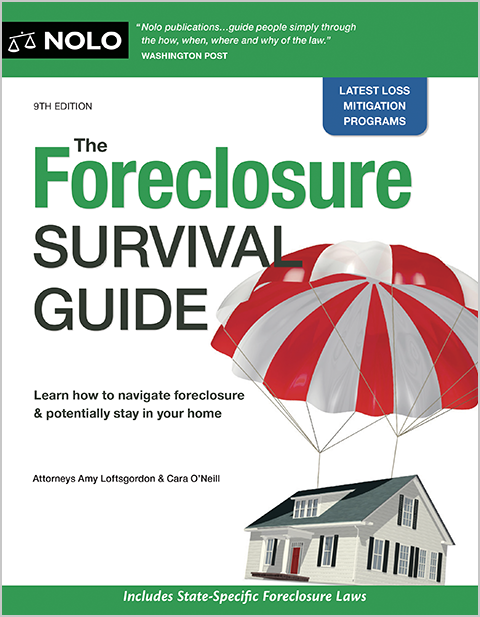Learn how you might be able to get a lower monthly mortgage payment through the Flex Modification program.
In a loan modification, the bank agrees to alter your mortgage terms, lowering your monthly payment to a more affordable amount. If Fannie Mae or Freddie Mac owns your loan, you might qualify for the "Flex Modification" program, where you'll get a special loan modification.
Under this program, the loan servicer takes a series of steps, which might include reducing the interest rate and, possibly, extending the loan term to lower your monthly payments by as much as 20%.
How Do Fannie Mae and Freddie Mac Work?
The Federal National Mortgage Association (FNMA), also called "Fannie Mae," and the Federal Home Loan Mortgage Corporation (FHLMC), also called "Freddie Mac," are government-sponsored enterprises that own or back (guarantee) many mortgages in the United States.
How Fannie Mae and Freddie Mac Play a Role in the Mortgage Market
A borrower typically takes out a loan to buy a home from a bank or mortgage company. However, the original lender usually won't keep the loan. Instead, the lender sells the loan to a bank or investor, like Fannie Mae or Freddie Mac, on what's commonly known as the "secondary mortgage market."
After purchasing a loan from a bank or mortgage company, Fannie Mae or Freddie Mac either keep the mortgage in their portfolio or package the loan with other loans into mortgage-backed securities, which are then sold to private investors. Fannie Mae and Freddie Mac sometimes guarantee the loans they sell to investors (that is, they ensure that an investor gets paid on the loan even if the borrower defaults).
Fannie Mae and Freddie Mac set guidelines for loan modifications in their portfolios.
What Is the Fannie Mae/Freddie Mac Flex Modification Program?
The Flex Modification program helps borrowers with a Fannie Mae- or Freddie Mac-owned loan. This program, which replaces the now-expired Home Affordable Modification Program (HAMP) program, is supposed to reduce an eligible borrower's mortgage payment by about 20%.
With a Flex Modification, the servicer has to take one or more of the following steps to lower the borrower's payment:
- capitalize the overdue amounts ("capitalizing" the overdue amounts means adding them to the outstanding loan amount)
- adjust the interest rate
- extend the term of the loan, or
- forbear some of the principal balance. ("Forbearing" the principal means setting aside a portion of the total debt before calculating the borrower's monthly payment. The borrower typically has to pay the set-aside part in a balloon payment when refinancing or selling the home or when the loan matures.)
If you're late by 60 days or more, you're likely eligible. Those less than 60 days delinquent might qualify in certain situations.
Your Loan Servicer Might Offer You a Flex Modification
Fannie Mae and Freddie Mac require their servicers to review all borrowers for a Flex Modification when the borrower is between 90 and 105 days behind in payments and send all eligible borrowers a trial plan offer. So, your servicer might offer you this type of modification even if you don't apply for it.
But you can also apply if a foreclosure sale hasn't happened yet. Under federal law, if you submit your complete application more than 37 days before a scheduled foreclosure sale, the foreclosure must be delayed while the application is pending.
Streamlined Loan Modification Process
For borrowers who are less than 90 days delinquent, the program requires a complete loss mitigation application (called a "borrower response package"). The program has a streamlined process for borrowers 90 or more days delinquent.
Trial Period Plan
Before the servicer finalizes the modification, you'll have to successfully complete a trial period plan that usually lasts three or four months. If you make all the trial payments, you'll get a permanent loan modification that will likely waive previous late charges, penalties, and other fees.
What Are the Requirements for the Flex Modification Program?
Fannie Mae or Freddie Mac must own your loan to qualify for a Flex Modification.
Fannie and Freddie Flex Loan Modification Guidelines
Also, you, your home, and your mortgage loan have to meet specific criteria, like:
- the loan must be a conventional first mortgage
- you must have suffered an eligible financial hardship
- you must have a stable income that will support a monthly payment and
- you must have taken out your mortgage at least 12 months before being evaluated for a Flex Modification.
The requirements to get this type of modification are rather extensive and complicated. So, call your servicer to find out if you qualify and to learn how to apply.
Get More Information About the Flex Modification Program
Click here for more information about the Flex Modification program if you have a Fannie Mae loan. If you have a Freddie Mac loan, go here.
Other Fannie Mae and Freddie Mac Modification Programs
If you aren't eligible for a Flex Modification, you might qualify for another modification program, a forbearance, a repayment plan, or another option. Fannie Mae and Freddie Mac offer other types of modifications, including special disaster modifications like:
- Extend Modifications for Disaster Relief (called "Extend Mods") and
- Capitalization and Extend Modifications (called "Cap and Extend Mods").
Extend Mods and Cap and Extend Mods typically go to homeowners who can resume making their full pre-disaster monthly payments after a forbearance but can't get caught up on escrow amounts.
What If Fannie Mae or Freddie Mac Doesn't Own My Loan?
Even if Fannie Mae or Freddie Mac doesn't own your loan, you might qualify for another modification program through your servicer. Servicers and investors usually offer in-house ("proprietary") modifications, as well as forbearance agreements and repayment plans, to help borrowers behind in mortgage payments.
Call your loan servicer to learn about the different options that might be available to you.
Getting Help
If you need help working out a modification or another way to avoid foreclosure with your loan servicer, consider contacting a foreclosure attorney.
A HUD-approved housing counselor is also helpful for information about ways to avoid foreclosure.

